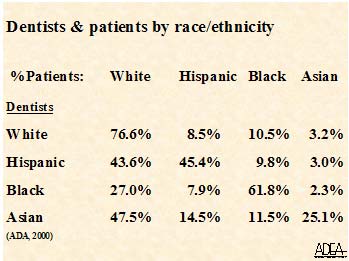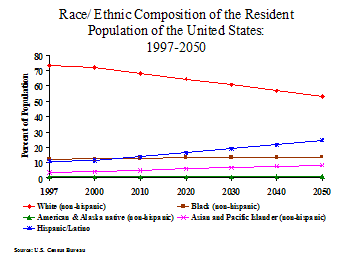

Increasing Student Diversity to Close Oral Health Gap
Recent data shows that dentists from underrepresented racial and ethnic minorities are more likely to treat minority populations than non-minority dentists. In 2000, black dentists reported that 61.8 percent of their patients were black; 45.4 percent of Hispanic dentists' patients were Hispanic; and 76.6 percent of White dentists' patients were White.1

The racial and ethnic composition of the workforce must change if there are to be enough dentists to meet the oral health care needs of a diverse patient population. The American Dental Education Association estimates that by 2020, there will be 54.2 dentists for every 100,000 people, the lowest since World War I, and there may be a substantial shortage of dentists as early as 2010.
The falling ratios are attributable to several factors: the number of dental school applicants declined by approximately 8-10 percent since 1997, and dental schools reduced their enrollment by about 30% in the 1980s from about 5,200 to the current 4,300 graduates per year.
Strategic measures are needed to increase the number of underrepresented minority graduates. In 2004-05, 6 percent of enrolled dental school students were Black; 6 percent were Hispanic, and .6 percent were American Indian.
And while minority dental school enrollments are falling, the minority populations are growing. Demographers project that by 2050, 58 percent of the population will derive from racial and ethnic minority groups.
